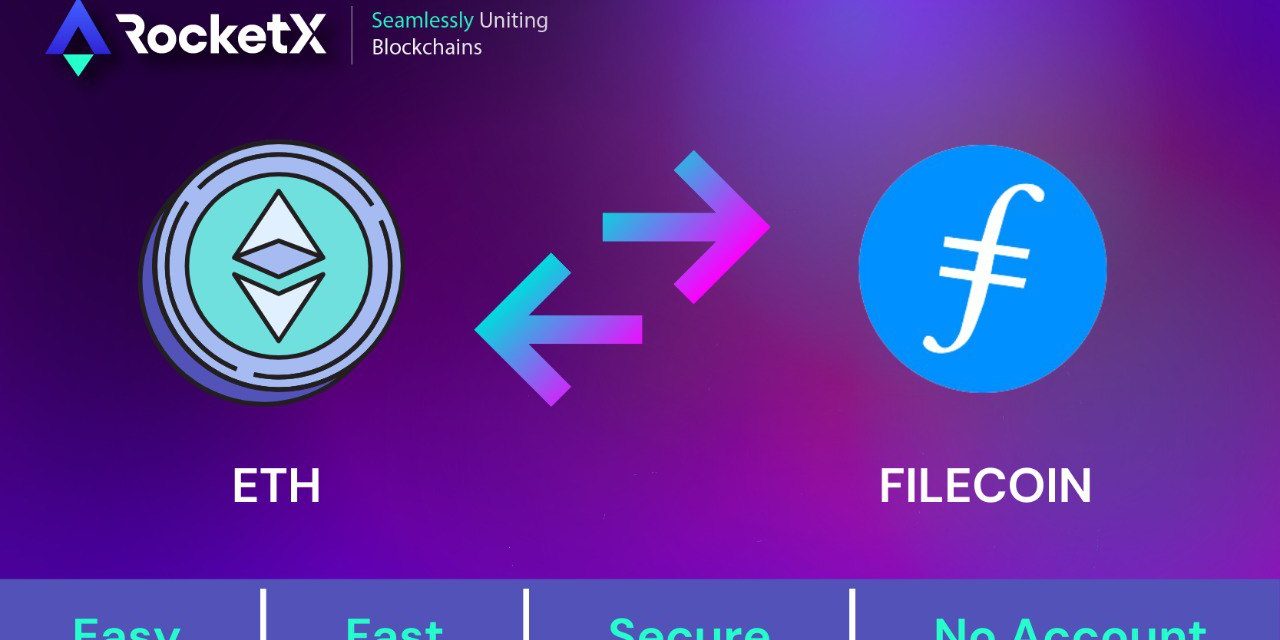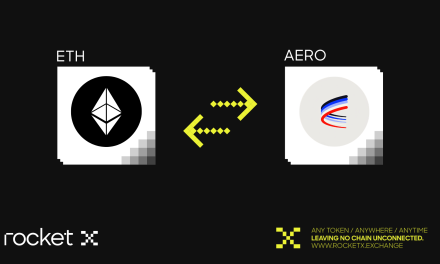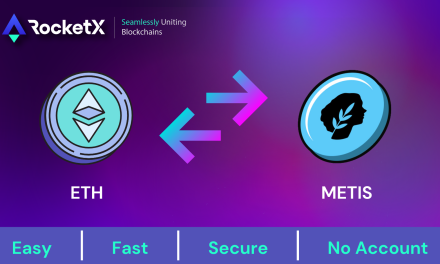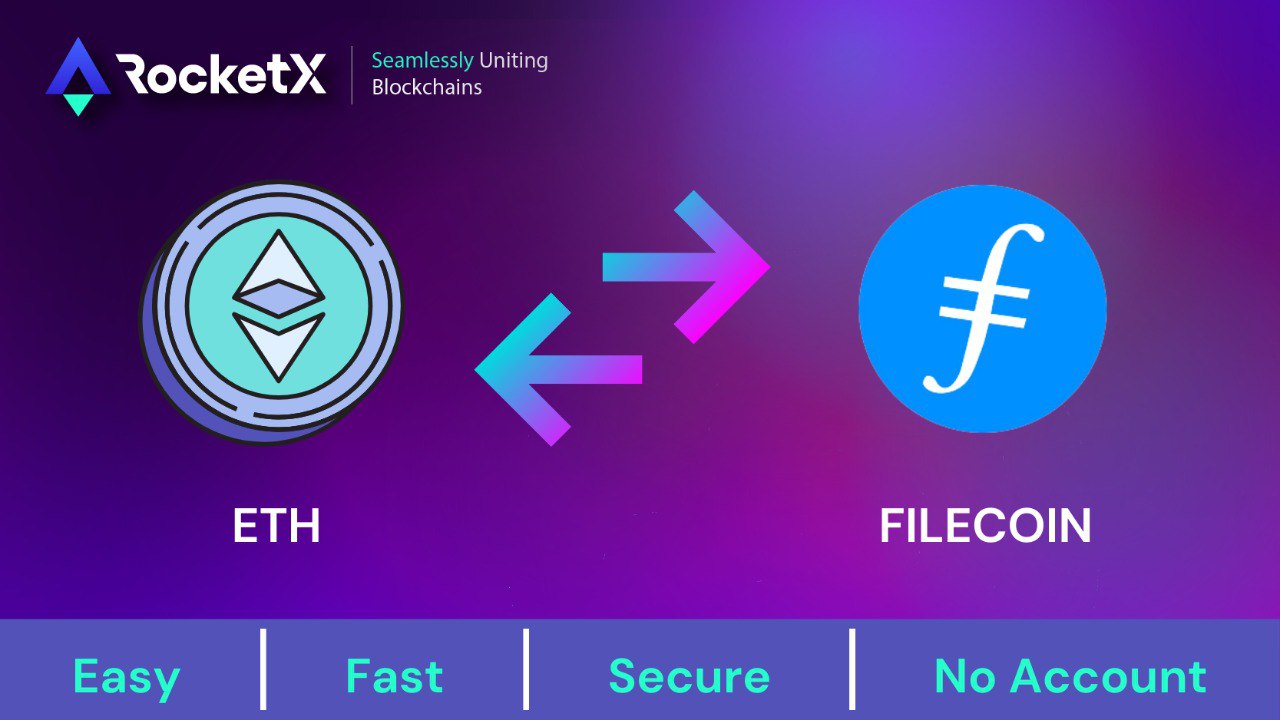
With the rise of decentralized storage networks like Filecoin, it’s crucial to understand how to transfer assets across blockchains effortlessly. One key method is using RocketX, which simplifies the process of moving assets into the Filecoin network. Before we delve into the bridging steps, let’s first understand what makes Filecoin a standout platform for decentralized storage.
Introduction to File Coin’s Decentralized Storage Revolution
In today’s world, data is everything. Storing it securely has become a major challenge, especially with centralized cloud providers controlling most of the storage market. Filecoin steps in as a game-changer, offering a decentralized, peer-to-peer network where users can buy and sell storage space securely and cost-effectively. This decentralized approach minimizes the risks of censorship, breaches, and excessive costs. But how does this decentralized system work? Let’s dive into the mechanics of Filecoin’s network.
Understanding the Filecoin Network and How It Works
At the core of the Filecoin network are two key players: storage miners and retrieval miners. Storage miners offer space for users to store data, while retrieval miners fetch the stored data upon request. Both miners earn FIL tokens for their contributions, ensuring the smooth operation of the system. What makes this even more robust are the cryptographic proofs—Proof-of-Replication and Proof-of-Spacetime—which verify that data remains stored securely and continuously. But why is decentralized storage so crucial in today’s digital landscape?
Why Decentralized Storage Matters in the Digital Age
As privacy concerns grow and data breaches become more frequent, decentralized storage offers a much-needed solution. Unlike traditional cloud services, where data is stored in a centralized manner, Filecoin’s system distributes data across multiple nodes. This dramatically reduces the risk of hacks and centralized control. Users not only gain more privacy and security but also participate in a competitive market where they can choose storage options that suit their needs. In this context, Filecoin’s native token, FIL, plays a pivotal role. But how does this token function, and what are its economics?
Understanding FIL Token and Its Tokenomics
The FIL token is integral to the Filecoin network. It powers transactions, rewards miners, and helps secure the blockchain through collateral mechanisms. With a total supply capped at 1.96 billion FIL and 585 million FIL already in circulation, it operates as both a utility and governance token. As of September 2024, FIL’s price stands at $3.66, and its market cap is roughly $2 billion. However, anyone considering investing in FIL should weigh the increasing demand for decentralized storage against the competition in this evolving sector.
Now that we have a clear understanding of what FIL is and its role within the ecosystem, it’s time to get hands-on with how you can transfer your assets to the Filecoin network. This is where RocketX comes in handy.
How to Bridge Ethereum to Filecoin Using RocketX
Bridging assets between different blockchains can be complex, but RocketX makes it simple and accessible for all users. In this section, we’ll guide you through the step-by-step process of transferring ETH from the Ethereum network to FIL on the Filecoin network.
Access RocketX and Connect Your Wallet
Head over to the RocketX Exchange and log in. Connect your Ethereum wallet, such as MetaMask, Rabby, or OKX, to the platform.
Choose Source and Destination Chains
On the RocketX dashboard, select Ethereum as your source chain and Filecoin as the destination chain for your assets.
Select Asset and Enter the Amount
Choose ETH as the asset to bridge. Enter the desired amount, and RocketX will display the equivalent value in FIL, including any associated fees.
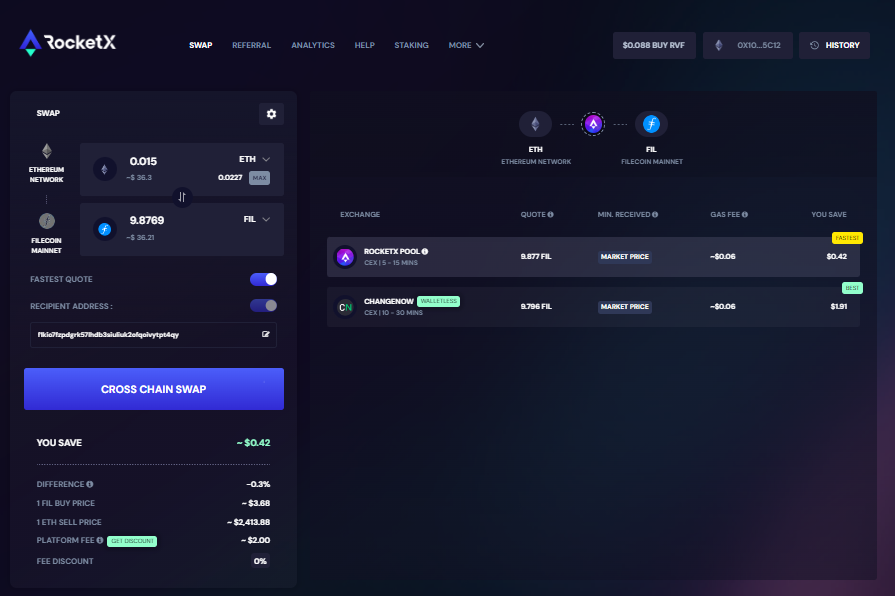
Approve and Confirm the Transaction
Review the transaction details, click cross-chain swap, and confirm the transaction through your wallet.
Complete the Bridging Process and Verify Your Wallet
After the transaction is complete, check your Filecoin-compatible wallet for the transferred FIL tokens. You can now use your FIL on the Filecoin network.
Top Wallets for Safely Storing Your FIL Tokens
Having successfully bridged your assets to Filecoin, you’ll now need a secure way to store your FIL tokens. Let’s explore the best wallets available for this purpose.
When dealing with digital assets, secure storage is critical. Fortunately, there are several excellent wallet options for storing your FIL tokens safely.
Ledger Hardware Wallet
For those looking for maximum security, the Ledger hardware wallet is a top choice. It keeps your FIL tokens offline, making them immune to online hacks.
Glif Web Wallet
A versatile option for users who prefer browser-based storage, Glif can also integrate with Ledger for enhanced protection.
Trust Wallet
As a popular mobile wallet that supports a wide variety of cryptocurrencies, Trust Wallet provides a convenient solution for managing FIL on the go.
MathWallet and FoxWallet
These wallets offer mobile and web-based solutions, providing flexibility for users who need to access their FIL tokens across multiple devices.
Each of these wallets has unique strengths, whether it’s the offline security of Ledger or the flexibility of browser-based wallets like Glif. However, as the demand for decentralized storage grows, so too will the need for effective storage solutions for FIL tokens.
Filecoin’s Future Outlook: Leading the Decentralized Storage Movement
With the rapid expansion of Web3 and decentralized applications (dApps), the need for secure, scalable, and censorship-resistant storage will only grow. Filecoin is well-positioned to meet this demand. Supported by a strong community and backed by the Filecoin Foundation, the network’s development roadmap includes upgrades to further enhance its storage capabilities. This could significantly increase adoption, pushing FIL into a key role within the future decentralized infrastructure.
Conclusion
As the digital world shifts toward decentralization, Filecoin stands out as a pivotal player in the decentralized storage space. Its ability to provide secure, scalable, and private data storage makes it an attractive alternative to centralized providers. Whether you’re looking to store data securely or capitalize on the growing demand for decentralized infrastructure, Filecoin’s unique advantages—backed by a robust tokenomics model—offer significant potential.
For users looking to engage with the Filecoin network, platforms like RocketX simplify the process of converting and bridging assets. As the Web3 ecosystem evolves, Filecoin could very well become the cornerstone of decentralized storage, offering a future where data is secure, private, and free from centralized control.

